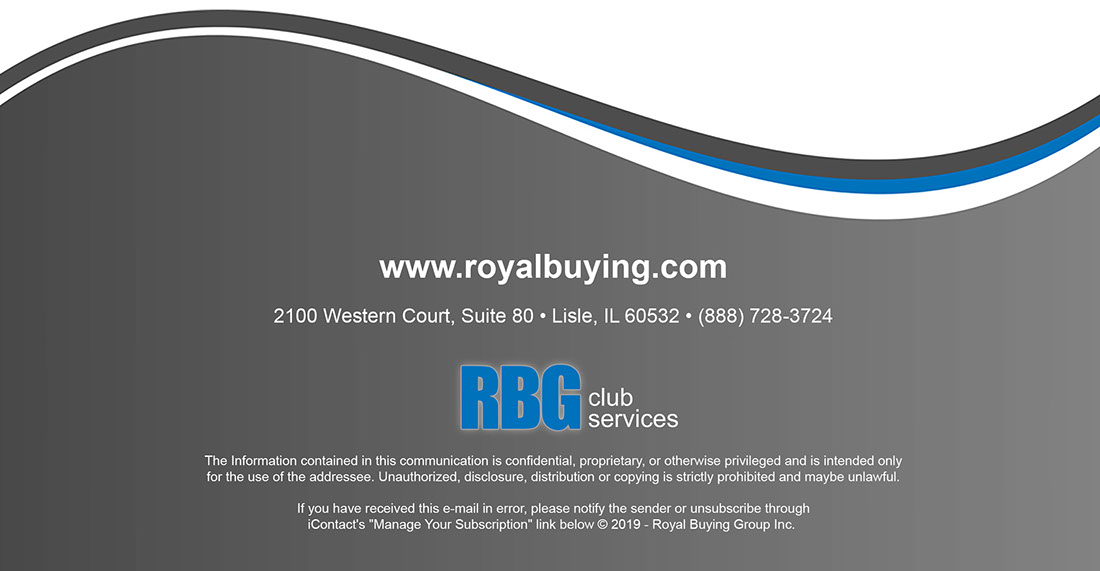How Healthy Snacks Help Boost the Bottom Line
December 2019
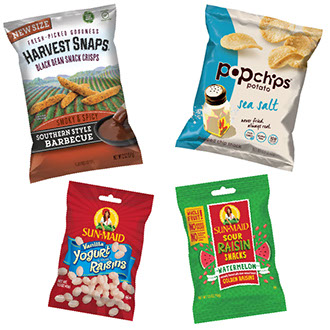 Convenience and quality remain top of mind for consumers
Convenience and quality remain top of mind for consumers
Healthy snacks are good for consumers, but they’re pretty good for retailers, too. More and more people are reaching for snacks—whether that means they are making a pit stop on a road trip or popping into a convenience store during a lunch break—and more and more, those snacks are healthy choices. Consumers are not only focused on convenience when it comes to their healthy options; they’re also seeking quality.
Snacking by the numbers
There are millions of noshers out there—80% of consumers say they snack at least once a day, and some even replace meals with snacks. A recent study from Brandware showed that 75% of c-store shoppers want more variety of healthy snacks and 64% of c-store shoppers would shop in-store more often if healthy snacks were available.
When examining the numbers, it’s apparent that the market is ripe for snacks that deliver—and not just on a craving, but a healthy benefit too.
Cash in on cravings
From crispy peapods and Popchips to deliciously sweet dried fruit blends, snackers look for an array of different foods. When it comes to what kind of snacks consumers gravitate toward, the Brandware study showed that the healthy attributes most important to consumers included all natural, non-GMO and high protein. Retailers looking to increase sales of healthy snacks should stock items that fit those criteria.
While traditional snacks will always have a place on the shelves (and in customers’ baskets), healthy snacks have the potential to be a major growth driver for c-stores. Retailers that give consumers healthier grab-and-go options will likely come out on top as the quest for a healthier lifestyle continues to trend.
How to Increase Sales with Nicotine Gum
August2019
 Stopping in to a convenience store to grab a pack of cigarettes is a routine that many a smoker can relate to. There’s a store on every corner, and their favorite brand is right there. But for the more than 22 million smokers who attempt to quit smoking every year, according to the FDA, the c-store doesn’t have to represent a place that must be avoided. In fact, it can just as easily remain part of their routine, provided retailers stock smoking cessation products like nicotine gum and make them easily visible to shoppers.
Stopping in to a convenience store to grab a pack of cigarettes is a routine that many a smoker can relate to. There’s a store on every corner, and their favorite brand is right there. But for the more than 22 million smokers who attempt to quit smoking every year, according to the FDA, the c-store doesn’t have to represent a place that must be avoided. In fact, it can just as easily remain part of their routine, provided retailers stock smoking cessation products like nicotine gum and make them easily visible to shoppers.
According to Nielsen retail data, smoking cessation is a $1B+ retail sales category, but the c-store channel currently only sells about $20MM of nicotine gum each year. Research by Brandware shows that 80% of shoppers say they would buy nicotine gum at their local convenience store. There is clearly a big opportunity for the convenience channel to earn a greater share of the smoking cessation category.
Consumer research also showed that nicotine gum is used by 60% of consumers who smoke as a way to supplement their smoking behavior (i.e. if they are trying to quit), so nicotine gum offers an opportunity for convenience stores to pick up incremental sales at the tobacco counter.
To increase sales of nicotine gum, c-store retailers need to stock nicotine gum by tobacco products and adequately promote that it’s there. Nicotac® brand nicotine gum was recently launched in c-stores and offers 2mg and 4mg nicotine strengths in three flavors—fruit, mint and cinnamon. In addition, Nicotac® delivers a higher profit margin percentage than cigarettes, which makes it a profitable decision for operators. In fact, many c-stores are earning up to $750 annual incremental profit per store with Nicotac. With higher profit margins than cigarettes and millions of people every year attempting to quit, adding a brand like Nicotac on the shelves means retailers are set up for profitable success.
Promoting nicotine gum in-store
Proper advertising and promotion of nicotine gum is key. Without knowing it is there, customers can’t take advantage of purchasing. Retailers should set up signage on store doors as well as at the point of sale and even on gas pumps, if applicable. Promoting Lil’ Drug’s Nicotac® brand nicotine gum at an attractive $4.99 retail price should help encourage smokers to give nicotine gum a try.
As consumers increasingly buy into healthier lifestyle habits, their purchasing decisions follow. Make sure to update offerings—including stocking Nicotac® nicotine gum—to ensure continued competitiveness in the market. When regulars give up their habit, they won’t have to give up their daily or weekly stop at the c-store.
How Healthy Snacks Help Boost the Bottom Line
April 2019
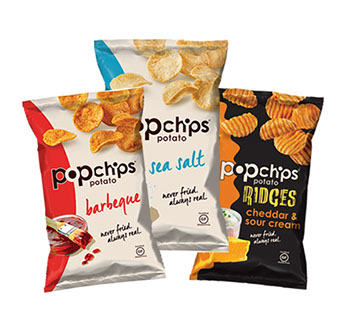 Convenience and quality remain top of mind for consumers
Convenience and quality remain top of mind for consumers
Healthy snacks are good for consumers, but they’re pretty good for retailers, too. More and more people are reaching for snacks—whether that means they are making a pit stop on a road trip or popping into a convenience store during a lunch break—and more and more, those snacks are healthy choices. Consumers are not only focused on convenience when it comes to their healthy options; they’re also seeking quality.
Snacking by the numbers
There are millions of noshers out there—80% of consumers say they snack at least once a day, and some even replace meals with snacks. A recent study from Brandware showed that 75% of c-store shoppers want more variety of healthy snacks and 64% of c-store shoppers would shop in-store more often if healthy snacks were available.
When examining the numbers, it’s apparent that the market is ripe for snacks that deliver—and not just on a craving, but a healthy benefit too.
Cash in on cravings
From crispy peapods and Popchips to deliciously sweet dried fruit blends, snackers look for an array of different foods. When it comes to what kind of snacks consumers gravitate toward, the Brandware study showed that the healthy attributes most important to consumers included all natural, non-GMO and high protein. Retailers looking to increase sales of healthy snacks should stock items that fit those criteria.
While traditional snacks will always have a place on the shelves (and in customers’ baskets), healthy snacks have the potential to be a major growth driver for c-stores. Retailers that give consumers healthier grab-and-go options will likely come out on top as the quest for a healthier lifestyle continues to trend.
How to Boost HBC Sales During Cold and Flu Season
January 2019
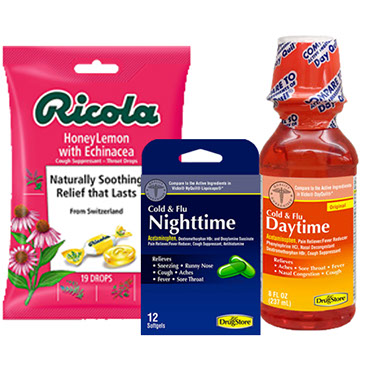 Increasing incremental category sales
Increasing incremental category sales
While no one wants to get sick during the winter, it is inevitable for many consumers. For convenience store retailers, cold and flu medicine are great to keep in stock, but beyond the obvious products such as decongestants and cough medicine, several other products can help boost health and beauty category (HBC) sales incrementally.
Here are a few strategies to employ, as well as a few products to consider stocking, to help thrive through these tough few months.
Product footprint and placement
C-stores are, of course, all about convenience. When consumers come in to purchase cold medicine, for example, what better pairing than cough drops or lip balm to help ease their other cold symptoms?
Retailers can count on shoppers to purchase medicine and other cold- and flu-relief products, but to boost sales in HBC, making sure peripheral products are well-placed can help. For instance, placing cough drops next to cold remedies can trigger a lightbulb moment in shoppers, or placing lip balm by the cash register could encourage impulse sales.
Showcasing products both in areas where they make a clear connection to related items as well as at the checkout counter--where visible signage and appropriate messaging can encourage additional purchases—can be the key to increasing incremental sales in the HBC category during winter.
Product selection
In addition to where products are located and how visible they are, incremental sales can be encouraged by offering appealing products. During winter, seasonal, special edition-type products can perform well, even with everyday products such as lip balm.
Lil’ Drug, a leading supplier of HBC products to c-stores, offered to retailers a countertop display of a Carmex Original Tube BOGO pack that included a free Carmex flavor stick. One of the largest c-store chains placed the countertop displays in regions around the country during winter months, and the data pointed to an increase in sales. According to retail sales data from September 2017 to February 2018, Lip Care category dollar sales increased by as much as 22% versus last year in regions that merchandised the Carmex BOGO display in their stores.
With numbers like that, it is worth it for retailers to consider placing cold and flu season products in prominent visibility. Beyond medications, products like cough drops, vitamin C supplements or hand lotion can all be ideal for increasing incremental sales during slower winter months.
3 Ways to Pump New Life into Your HBC Business
Proven merchandising strategies that increase sales and profit
September 2018
 According to a Lil’ Drug study on the reasons shoppers purchase HBC at convenience stores, the convenience of being close to a c-store and being able to get in and out quickly is one of the most cited reason as to why consumers purchase an item at a convenience store rather than another retailer. So if c-stores can deliver convenience while optimizing other marketing factors, such as product mix and merchandising, they can expect results to follow.
According to a Lil’ Drug study on the reasons shoppers purchase HBC at convenience stores, the convenience of being close to a c-store and being able to get in and out quickly is one of the most cited reason as to why consumers purchase an item at a convenience store rather than another retailer. So if c-stores can deliver convenience while optimizing other marketing factors, such as product mix and merchandising, they can expect results to follow.
Successful retailers often take a fresh look at the Health and Beauty Care (HBC) assortment and are willing to try new approaches to c-store merchandising strategy. Lil’ Drug Store Products (LDSP), the #1 HBC supplier to the convenience channel, has worked with retailers of all sizes to develop effective category management strategies. LDSP shared three different strategies that delivered the same end-result—increased sales and profits, while maintaining efficiencies that c-store shoppers demand.
Strategy 1: Make HBC Easy to Find
In the first case study, LDSP recommended upgrading from a relatively small assortment of HBC products at the front counter to a permanent inline shelf set. This strategy gave consumers a broader selection of HBC solutions, enabled easier shopping access and increased awareness.
For shoppers coming in for a specific health and beauty item, products were quick and easy to find. The increased visibility and improved access generated incremental sales, as retailers who were not previously thinking to buy HBC products at a c-store were now more aware of the availability of pain relievers, cold and allergy remedies.
Retailers who have employed this strategy not only increased sales, they also exceeded their budgeted gross profit. In one case, a retailer increased profit by 4.5 times in the first year alone.
Strategy 2: Offer Value
Ask yourself what you want your HBC shelf design to accomplish and then make it happen by using category management best practices. What are the benefits? Lil’ Drug’s experience shows that a well thought out retail planogram strategy can result in increased visual appeal, more effective communication to customers, tightened inventories, improved product positioning within sub-categories and greater productivity within the space.
As an example, LDSP worked with a Top 50 c-store chain to create an HBC shelf schematic that moved larger packs of value brand products from the bottom shelf to eye level on the top shelf. This alignment encouraged some shoppers to trade up to the higher dollar value packs, which contributed to more than 10% category dollar growth for the retailer compared to the channel average 2% category growth versus the prior year.
Strategy 3: Optimize Assortment
In some channels, giving customers a plethora of product forms, pack sizes and formulations to choose from might be good for business. However, space and time is more limited in c-stores so multiple consumer options may not be feasible. Offering too many choices can sometimes be confusing to consumers and makes the HBC category more difficult to shop. Therefore, it is important for the c-store retailer to focus the assortment on the most productive SKUs.
In this third case study, LDSP recommended that a regional c-store chain eliminate middle tier price points. The retailer concentrated on meeting the needs of the price conscious and value oriented shoppers. The absence of a middle price point did not deter shoppers from trading up to higher dollar ring, multi-dose options. In fact, this retailer gained more than 20% dollar growth after eliminating the middle price point SKU while unit sales remained unchanged compared to the prior year.
C-store retailers have limited space, so it can sometimes be a challenge to increase sales and profits. Fortunately, several tried and true merchandising strategies simply require a different perspective to generate growth. Consider trying one of the proven techniques described above to increase HBC sales and profit at your stores.
Healthy Snacks Attract New Sales
June 2018
 Convenience-store operators plan their stores so that when customers come in looking for a snack, they’ll have no trouble finding an array of chips, candy, sodas and other tasty treats. But when it comes to appealing to consumers who want a healthier snack, stocking shelves with better-for-you options can be a great way to increase sales.
Convenience-store operators plan their stores so that when customers come in looking for a snack, they’ll have no trouble finding an array of chips, candy, sodas and other tasty treats. But when it comes to appealing to consumers who want a healthier snack, stocking shelves with better-for-you options can be a great way to increase sales.
More people are looking for healthy snacks
A July 2015 study from Brandware showed that 72% of consumers prefer to buy healthier snacks. Nowadays, shoppers have more options to choose from, including freshly prepared hummus and veggie cups, fruit cups and grab-and-go yogurt. Some consumers still think that c-stores don’t offer enough healthy snacks, though. To change the mindset that c-store don’t have enough options, retailers need to make these snacks highly visible in their stores—that can include placing them on endcaps or displays, where shoppers are more likely to notice them.
In the realm of shelf-stable options that are convenient and easy to eat, snacks such as Popchips have been gaining traction. Touted as having all the flavor but half the fat of regular fried potato chips, Popchips are a nonfried chip that offers a familiar taste in a better-for-you package, which is perfect for snackers looking for healthy options.
When they reach for a snack at a c-store, consumers who want something healthier often choose fresh fruit, wellness/protein or granola bars, trail mix or jerky. Alongside these snacks, lower-calorie, lower-fat and more natural versions of snacks that consumers already love, such as chips and popcorn, are on the rise.
What does ‘healthy’ mean?
The Brandware study showed that the healthy attributes most important to consumers included all natural, non-GMO and high protein. Retailers looking to increase sales of healthy snacks should stock items that fit those criteria.
Retailers should also stock shelves with snacks that offer benefits such as all-natural ingredients, no trans-fats, no artificial sweeteners or flavors and fewer calories than traditional snacks, as well as options that are non-GMO and high protein, in order to boost sales of healthy snacks.
Appealing to more consumers, boosting sales
Retailers know they have what consumers want in the realm of indulgent snacks such as baked goods or chips, but for customers who want grab-and-go options that are convenient and delicious but not too indulgent, it’s important to stock alternatives. In the Brandware study, 75% of c-store shoppers indicated the wanted more variety of healthy snacks. If consumers still think that c-stores don’t have the healthy snacks they’re looking for, they’ll go elsewhere—like their local supermarket—to purchase those snacks. The Brandware study showed that shoppers said they would buy more often at c-stores that had a good variety of healthy snacks. C-stores can boost incremental sales by changing that mindset, which can be done through product promotion, including signage, and placement of healthy snacks in highly visible spaces within the store.
Once consumers see that they can get the same snacks at a c-store that they can at a grocery store, they may stop in to pick up a snack more frequently. Signage that promotes new, healthy items can boost engagement, as can marketing the new healthy snacks as a tasty, healthful alternative to products consumers already love.
3 Way to Pump New Life into your HBC Business
Proven merchandising strategies that increase sales and profit
November 2017
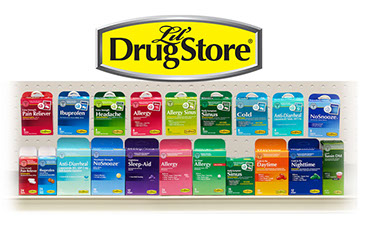 Brought to you by Lil’ Drug Store
Brought to you by Lil’ Drug Store
According to the Technomic C-store Market Brief, the ability to get in and out quickly is the most cited reason as to why consumers purchase an item at a c-store as opposed to other classes of trade. If a retailer can deliver convenience while optimizing other marketing factors, such as product mix and merchandising, they can expect results to follow.
Successful retailers often take a fresh look at the Health and Beauty Care (HBC) assortment and are willing to try new approaches to convenience store merchandising strategy. Lil’ Drug Store Products (LDSP), the #1 HBC supplier to the convenience channel, has worked with retailers of all sizes to develop effective category management strategies. LDSP shared three different strategies that delivered the same end-result – INCREASED SALES and PROFITS, while maintaining efficiencies that c-store shoppers demand.
Strategy 1: Get In Line
In the first case study, LDSP recommended upgrading from a relatively small assortment of HBC products at the front counter to a permanent inline shelf set. This strategy gave consumers a broader selection of HBC solutions, enabled easier shopping access, and increased awareness.
For shoppers coming in for a specific health and beauty item, products were quick and easy to find. The increased visibility and improved access generated incremental sales, as retailers who were not previously thinking to buy HBC products at a convenience store were now more aware of the availability of pain relievers, cold and allergy remedies.
Retailers who have employed this strategy not only increased sales, they also exceeded their budgeted gross profit. In one case, a retailer increased profit by 4.5 times in the first year alone.
Strategy 2: Go Big to Go Home
Ask yourself what you want your HBC shelf design to accomplish and then make it happen by using category management best practices. What are the benefits? Lil’ Drug’s experience shows that a well thought out retail planogram strategy can result in increased visual appeal, more effective communication to customers, tightened inventories, improved product positioning within sub-categories and greater productivity within the space.
As an example, LDSP worked with a Top 50 convenience store chain to create an HBC shelf schematic that moved larger packs of value brand products from the bottom shelf to eye level on the top shelf. This alignment encouraged some shoppers to trade up to the higher dollar value packs, which contributed to more than +10% category dollar growth for the retailer compared to the channel average +2% category growth versus the prior year.
Strategy 3: Up for the Count
In some channels, giving customers a plethora of product forms, pack sizes and formulations to choose from might be good for business. However, space and time is more limited in c-stores so multiple consumer options may not be feasible. Offering too many choices can sometimes be confusing to consumers and makes the HBC category more difficult to shop. Therefore, it is important for the c-store retailer to focus the assortment on the most productive SKUs.
In this third case study, LDSP recommended that a regional c-store chain eliminate middle tier price points. The retailer concentrated on meeting the needs of the price conscious and value oriented shoppers. The absence of a middle price point did not deter shoppers from trading up to higher dollar ring, multi-dose options. In fact, this retailer gained +20% dollar growth after eliminating the middle price point SKU while unit sales remained unchanged compared to the prior year.
Conclusion
Convenience store retailers have limited space so it can sometimes be a challenge to increase sales and profit. Fortunately, several tried and true merchandising strategies simply require a different perspective to generate growth. Consider trying one of the proven techniques described above to increase HBC sales and profit at your stores!
Healthy Snack Trend Continues to Grow
Opportunity for Healthy Snacks at Convenience
May 2017
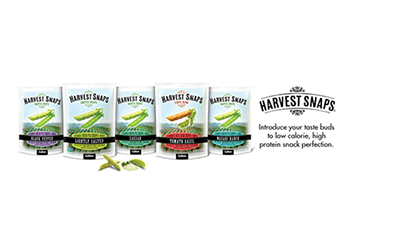 With consumer wanting to find healthier snacks in c-stores, it is important to start providing healthier snack options in your store. Convenience channel shopper research identified several key insights regarding healthy snacks:
With consumer wanting to find healthier snacks in c-stores, it is important to start providing healthier snack options in your store. Convenience channel shopper research identified several key insights regarding healthy snacks:
• 65% think that c-stores do not have adequate selection of healthy food choices
• 79% of millennials (ages 25-34) wish c-store carried more healthy snacks
• 80% like to try new healthy snack types
• 66% said they would pay more for healthy snacks
• 64% would buy more products from c-stores that offered healthy snack choices
Start providing a unique variety of healthy and great tasting snack choices to convenience store shoppers! Do this by creating a Healthy Snack Center. Here you can discover unique and delicious all natural snack alternatives. In addition, offering healthy snack choices calls for incremental growth. With a healthy snack center, you can appeal to consumer groups that is essential for c-store growth. Research shows that offering more “better for you” alternatives could increase convenience store sales with these key consumer groups: millennials (25-34 year olds), women, and natural supermarket shoppers. Also, incremental display space enables c-stores to offer healthier snack choices without alienating the core c-store shopper.
There are many benefits a retailer has for offering healthy snacks:
• Healthy snack center offers incremental shelf space
• Pre-selected assortment of unique, great tasting healthy snacks
• Capture greater share of “better for you” snack purchases
• Improved consumer perception of convenience store chain
• Increased purchase occasions from key consumer groups (e.g. Millennials)
• Higher dollar ring = more dollar profit.
In the last year, Lil’ Drug Store has started offering a variety of healthy snack options. Early this year, they launched Harvest Snaps. These snacks are great tasting, crispy and light pea-pod shaped salty snacks. They are baked, not fried, and made from whole peas. Harvest Snaps is a $100MM retail sales brand and has seen dollar sales growth of over 35% vs. LY in all outlets (Wal-Mart, Target, Grocery, Costco).
Another new addition to their healthy snack lineup is Sensible Foods Crunch Dried Fruit. Sensible Foods picks fruits at the peak of ripeness and “crunch dries” them to create a flavorful, crunchy snack. The crunch dried process is a proprietary hybrid between freeze drying and low moisture dehydration. The unique blend of the two processes creates an incredibly flavorful taste and crispy crunchy texture and retains an exceptionally high amount of the fruits nutritional value. Sensible Foods Crunch Dried fruit snacks are available in a varied assortment of delicious flavors. Sensible Foods Crunch Dried Fruit delivers 2x the sales and has better taste, texture and variety of fruit snacks than any other brand.
With 75% of c-store shoppers wanting a greater selection of healthy snacks, Lil’ Drug Stores new healthy snack products are the perfect addition to your store! Stock up today!
